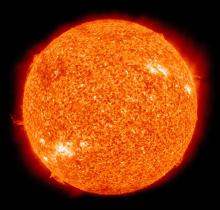Listen to today's episode of StarDate on the web the same day it airs in high-quality streaming audio without any extra ads or announcements. Choose a $8 one-month pass, or listen every day for a year for just $30.
You are here
Copernicus
The blanket of air that surrounds Earth screens out some harmful forms of radiation, including ultraviolet and X-rays. That’s good for life, but bad for astronomy. It means that objects that produce those forms of energy are invisible. Yet those objects are some of the most energetic and interesting in the universe, so astronomers really want to see those wavelengths.
One solution is to send their telescopes into space. And one of the early ones was launched 50 years ago today. Named Copernicus, it was the last of four craft in the series of Orbiting Astronomical Observatories. The series was managed by Nancy Grace Roman, a NASA astronomer and the first woman to oversee a major spacecraft project. A new space telescope, scheduled for launch later this decade, is named in her honor.
Copernicus had two instruments. With them, the craft discovered the first “long-period” pulsars — the crushed cores of once mighty stars that spin once every few minutes. It kept an eye on many pulsars that spin in just a few seconds, as well as binary systems that emit a lot of X-rays. And it studied the hearts of galaxies that contain supermassive black holes encircled by disks of superhot gas.
Copernicus operated until February of 1981. Its findings greatly expanded our knowledge of the ultraviolet and X-ray universe — a universe that’s hidden from the surface by Earth’s comforting atmosphere.
Script by Damond Benningfield





